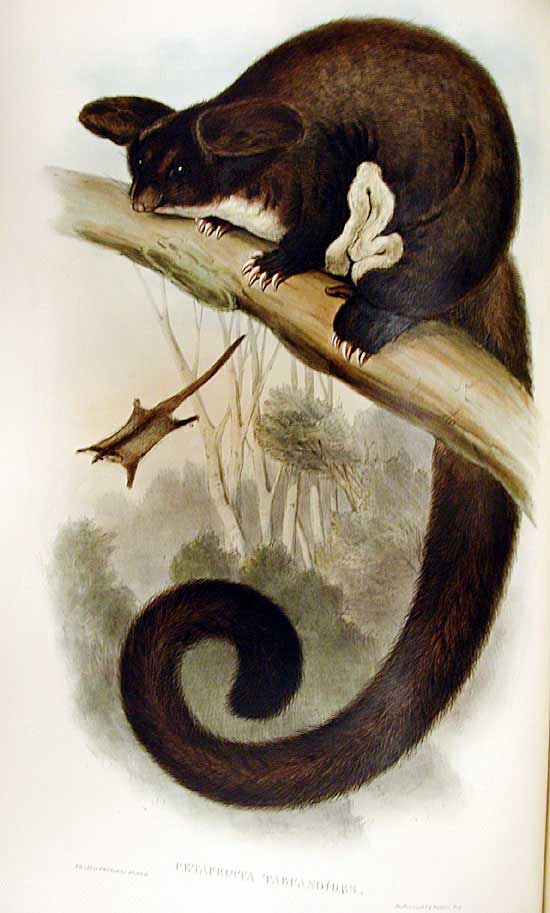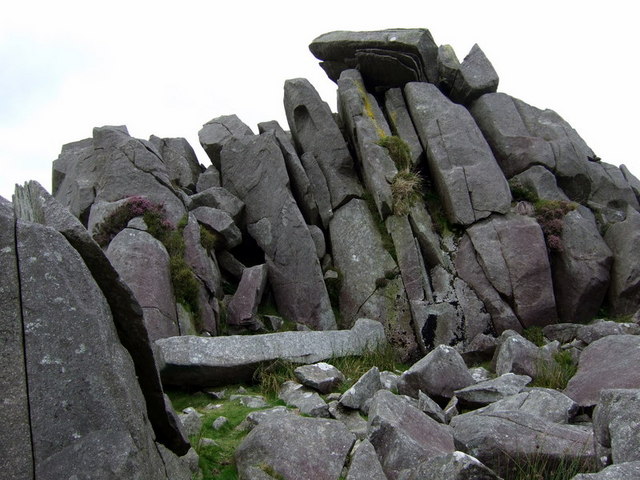|
Myrniong, Victoria
Myrniong ()'' Macquarie Dictionary, Fourth Edition'' (2005). Melbourne, The Macquarie Library Pty Ltd. is a town in Victoria, Australia. The town is near the Western Freeway, north west of the state capital, Melbourne and west of Bacchus Marsh. Situated close by the Lerderderg River, at the , Myrniong had a population of 404. The town is in the eastern area of Shire of Moorabool local government area. Myrniong was named for the ''murrnong'' plant, the local indigenous word for yam daisy, a popular food source. European settlement began in around 1850 with local farmers producing wheat for hungry gold miners at nearby Blackwood. Later production concentrated on beef and dairy. The Post Office opened on 6 September 1858 as Pentland Hills, was renamed Myrniong in 1872 and closed in 1970. Myrniong is known for its many bluestone buildings, including the historic Plough Hotel, established in 1859, and the Anglican church. Other attractions in the area include Pykes Cr ... [...More Info...] [...Related Items...] OR: [Wikipedia] [Google] [Baidu] |
Western Freeway (Victoria)
The Western Highway is the Victorian part of the principal route linking the Australian cities of Melbourne and Adelaide, with a length of approximately of single carriageway, then of dual carriageway known as the Western Freeway. It is a part of the National Highway network and designated routes A8 and M8. The western end continues into South Australia as the Dukes Highway, the next section of the Melbourne–Adelaide National Highway. The Western Freeway joins Melbourne's freeway network via the Western Ring Road, in the western suburbs of Melbourne. The Western Highway is the second busiest national highway in Australia, in terms of freight movements, with over five million tonnes annually. It provides the link between the eastern seaboard and South Australia and Western Australia. The towns along the way, including Ballarat, Ararat, Stawell and Horsham, are agricultural and manufacturing centres. Plans are underway for the freeway to be extended west to Ararat, and ... [...More Info...] [...Related Items...] OR: [Wikipedia] [Google] [Baidu] |
Shire Of Moorabool
The Shire of Moorabool is a local government area in Victoria, Australia, located in the western part of the state. It covers an area of and, in June 2018, had a population of 34,158. It includes the towns of Ballan, Bacchus Marsh, Balliang, Mount Wallace, Myrniong, Blackwood, Greendale, Gordon, Korweinguboora and Mount Egerton, Bungaree, Elaine and Wallace. It was formed in 1994 from the amalgamation of the Shire of Bacchus Marsh, Shire of Ballan and parts of the Shire of Bungaree and City of Werribee. The Shire is governed and administered by the Moorabool Shire Council; its seat of local government and administrative centre is located at the council headquarters in Ballan, it also has service centres located in Bacchus Marsh and Darley. The Shire is named after the Moorabool River, a major geographical feature that meanders through the area, which is named after the Wathawurrung word ''moo-roo-bul'' referring to Bunyip The bunyip is a creature from the aborigina ... [...More Info...] [...Related Items...] OR: [Wikipedia] [Google] [Baidu] |
Werribee Gorge State Park
Werribee Gorge State Park is a state park in Victoria, Australia. It is located near Bacchus Marsh and is used by bushwalkers and rock climbers, who are attracted to its views and geological features. Werribee Gorge The main feature of this park is the Werribee Gorge, through which the Werribee River meanders. This gorge has acquired some renown throughout the 20th century for its geological value. Werribee Gorge has attracted the attention of geologists last century as one of the earliest known ancient glacial deposits, parts of which can be seen. The 200m deep gorge was formed about a million years ago when movements along a fault in the Earth's crust steepened the river's gradient. Since then the stream has continued to deepen the gorge through underlying rock to ancient sediments deposited in a sea more than 400 million years ago. Other geological events that have since occurred include the advance and retreat of an ice sheet and the inflow of volcanic lava. There is ... [...More Info...] [...Related Items...] OR: [Wikipedia] [Google] [Baidu] |
Wombat State Forest
The Wombat State Forest (locally: Bullarook) is located west of Melbourne, Victoria, Australia, between Woodend and Daylesford, at the Great Dividing Range. The forest is approximately in size and sits upon Ordovician or Cenozoic sediments. The Bullarook Wombat State Forest was proclaimed in 1871. The only initiative in Australia to introduce community forestry, within the internationally understood context, is in the Wombat State Forest. It is managed by the Department of Environment, Land, Water and Planning. The management plan covers several areas such as firewood and other products; protection of water supplies; conservation of biodiversity; and conservation of landscape. Other areas of importance include cultural heritage, research, education, tourism, recreation, mineral exploration, mining, and grazing. On 24 June 2021, the Andrews State Government, following extensive review and recommendation, declerated that the Wombat State Forest would be added to the National ... [...More Info...] [...Related Items...] OR: [Wikipedia] [Google] [Baidu] |
Volcano
A volcano is a rupture in the crust of a planetary-mass object, such as Earth, that allows hot lava, volcanic ash, and gases to escape from a magma chamber below the surface. On Earth, volcanoes are most often found where tectonic plates are diverging or converging, and most are found underwater. For example, a mid-ocean ridge, such as the Mid-Atlantic Ridge, has volcanoes caused by divergent tectonic plates whereas the Pacific Ring of Fire has volcanoes caused by convergent tectonic plates. Volcanoes can also form where there is stretching and thinning of the crust's plates, such as in the East African Rift and the Wells Gray-Clearwater volcanic field and Rio Grande rift in North America. Volcanism away from plate boundaries has been postulated to arise from upwelling diapirs from the core–mantle boundary, deep in the Earth. This results in hotspot volcanism, of which the Hawaiian hotspot is an example. Volcanoes are usually not created where two tectonic plates slide ... [...More Info...] [...Related Items...] OR: [Wikipedia] [Google] [Baidu] |
Mount Blackwood, Victoria
Mount is often used as part of the name of specific mountains, e.g. Mount Everest. Mount or Mounts may also refer to: Places * Mount, Cornwall, a village in Warleggan parish, England * Mount, Perranzabuloe, a hamlet in Perranzabuloe parish, Cornwall, England * Mounts, Indiana, a community in Gibson County, Indiana, United States People * Mount (surname) * William L. Mounts (1862–1929), American lawyer and politician Computing and software * Mount (computing), the process of making a file system accessible * Mount (Unix), the utility in Unix-like operating systems which mounts file systems Displays and equipment * Mount, a fixed point for attaching equipment, such as a hardpoint on an airframe * Mounting board, in picture framing * Mount, a hanging scroll for mounting paintings * Mount, to display an item on a heavy backing such as foamcore, e.g.: ** To pin a biological specimen, on a heavy backing in a stretched stable position for ease of dissection or display ** To p ... [...More Info...] [...Related Items...] OR: [Wikipedia] [Google] [Baidu] |
Market Gardening
A market garden is the relatively small-scale production of fruits, vegetables and flowers as cash crops, frequently sold directly to consumers and restaurants. The diversity of crops grown on a small area of land, typically from under to some hectares (a few acres), or sometimes in greenhouses, distinguishes it from other types of farming. A market garden is sometimes called a truck farm. A market garden is a business that provides a wide range and steady supply of fresh produce through the local growing season. Unlike large, industrial farms, which practice monoculture and mechanization, many different crops and varieties are grown and more manual labour and gardening techniques are used. The small output requires selling through such local fresh produce outlets as on-farm stands, farmers' markets, community-supported agriculture subscriptions, restaurants and independent produce stores. Market gardening and orchard farming are closely related to horticulture, which conce ... [...More Info...] [...Related Items...] OR: [Wikipedia] [Google] [Baidu] |
Anglican
Anglicanism is a Western Christian tradition that has developed from the practices, liturgy, and identity of the Church of England following the English Reformation, in the context of the Protestant Reformation in Europe. It is one of the largest branches of Christianity, with around 110 million adherents worldwide . Adherents of Anglicanism are called ''Anglicans''; they are also called ''Episcopalians'' in some countries. The majority of Anglicans are members of national or regional ecclesiastical provinces of the international Anglican Communion, which forms the third-largest Christian communion in the world, after the Roman Catholic Church and the Eastern Orthodox Church. These provinces are in full communion with the See of Canterbury and thus with the Archbishop of Canterbury, whom the communion refers to as its '' primus inter pares'' (Latin, 'first among equals'). The Archbishop calls the decennial Lambeth Conference, chairs the meeting of primates, and is the ... [...More Info...] [...Related Items...] OR: [Wikipedia] [Google] [Baidu] |
Bluestone
Bluestone is a cultural or commercial name for a number of dimension or building stone varieties, including: * basalt in Victoria, Australia, and in New Zealand * dolerites in Tasmania, Australia; and in Britain (including Stonehenge) * feldspathic sandstone in the US and Canada * limestone in the Shenandoah Valley in the US, from the Hainaut quarries in Soignies, Belgium, and from quarries in County Carlow, County Galway and County Kilkenny in Ireland * slate in South Australia Stonehenge The term "bluestone" in Britain is used in a loose sense to cover all of the "foreign," not intrinsic, stones and rock debris at Stonehenge. It is a "convenience" label rather than a geological term, since at least 46 different rock types are represented. One of the most common rocks in the assemblage is known as Preseli Spotted Dolerite—a chemically altered igneous rock containing spots or clusters of secondary minerals replacing plagioclase feldspar. It is a medium grained dark and ... [...More Info...] [...Related Items...] OR: [Wikipedia] [Google] [Baidu] |
Blackwood, Victoria
Blackwood is a rural village in Victoria, Australia. The township is located on the Lerderderg River, 89 kilometres north-west of the state capital, Melbourne, within the Wombat State Forest. Blackwood is in the Shire of Moorabool local government area and had a population of 387 at the . Businesses in the town include: the Blackwood Hotel, Martin St. Coffee (a coffee roaster and café), Blackwood Post Office and Café, Allen's Emporium (antique market store), the Blackwood Hat Shoppe, a design studio and Blackwood Ridge (gardens and restaurant). Accommodation options include: the Mineral Springs Caravan Park, various holiday cottages and bed and breakfast accommodation. History In 1848 in a list of Crown Lands “beyond the settled districts” at Port Phillip (Western Port District) there were three pastoral runs in the vicinity of Mount Blackwood: ‘Cupumnimnip, Mount Blackwood’, 15,000 acres, leased by Sir John Lewes (per James Simpson); ‘Pentland Hills’, 14,000 ac ... [...More Info...] [...Related Items...] OR: [Wikipedia] [Google] [Baidu] |
Yam Daisy
The murnong or yam daisy is any of the plants ''Microseris walteri'', ''Microseris lanceolata'' and ''Microseris scapigera'', which are an important food source for many Aboriginal peoples in southern parts of Australia. The roots of the murnong plants were consumed in large quantities by Aboriginal people in the colony of Victoria until the 1840s, when European colonists began using the murnong crop lands for sheep farming. The binomial names of the three species are often misidentified, because they were classified under different names until they were clarified in 2016. Murnong is often described as growing a sweet tuber, but this identifies ''Microseris walteri'' rather than the other two plants, which have bitter roots. Botanical naming For more than 30 years Murnong was named as ''Microseris'' sp. or ''Microseris lanceolata'' or ''Microseris scapigera''. Royal Botanic Gardens Victoria botanist Neville Walsh clarified the botanical name of ''Microseris walteri'' in 2016 ... [...More Info...] [...Related Items...] OR: [Wikipedia] [Google] [Baidu] |



.jpg)


